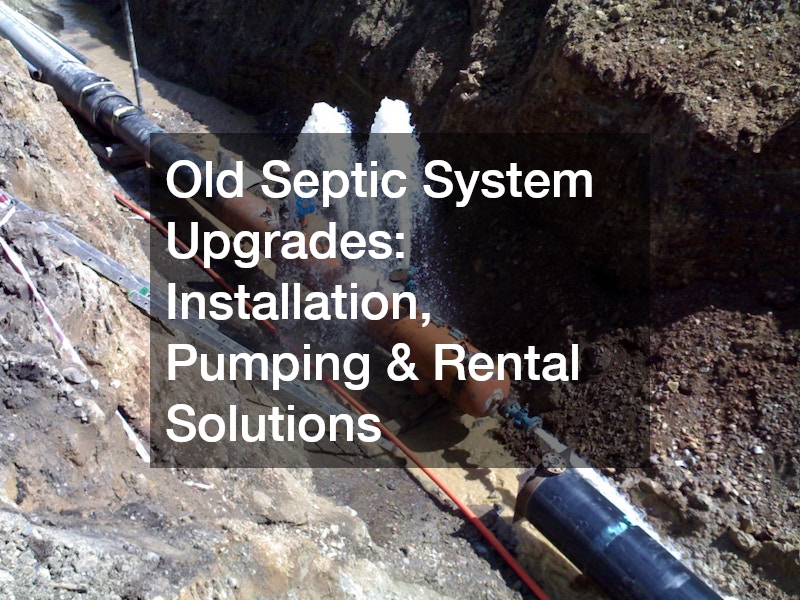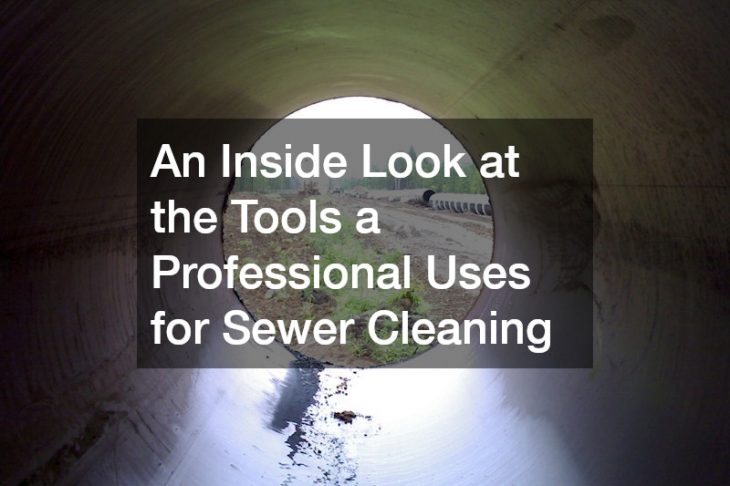
Upgrading Your Old Septic System Complete Solutions from Installation to Pumping and Rentals
In this article, we will explore the process of upgrading your old septic system, providing comprehensive solutions from installation to maintenance, and even addressing rental options. Whether you’re dealing with an outdated system or considering an upgrade, these insights will guide you every step of the way. Understanding and addressing issues with your old septic system can prevent future problems and maintain the efficiency and reliability of your household’s waste management.
What are the signs that my old septic system needs upgrading?

One of the most noticeable signs that your old septic system needs upgrading is persistent odors, which often indicate that your system is not functioning properly. Slow drainage in sinks, showers, and toilets is another common warning sign of an outdated septic system. These symptoms can suggest that your system is overwhelmed and unable to handle the wastewater effectively.
In addition to odors and slow drainage, water pooling in unexpected places in your yard can signify a serious septic issue. This pooling often results from a failing septic tank installation or a damaged drain field, which cannot adequately process and absorb waste. These indicators suggest that your system is overdue for a thorough inspection by a septic system installer or a local septic tank installation expert.
Moreover, you might also notice that your septic system requires more frequent septic pumping service. If you’re scheduling septic system pumping more often than recommended, it may be time to reconsider an upgrade. An old septic system not holding up well may indicate structural issues or system inefficiencies that are best addressed by a complete overhaul.
How do modern septic systems differ from old septic systems?
Modern septic systems are designed with advanced technology that allows for greater efficiency and environmental friendliness compared to old septic systems. New systems often incorporate better filtration and nutrient removal processes, minimizing the impact on the surrounding ecosystem. These improvements provide a more sustainable solution for waste management, particularly in environmentally sensitive areas.
The design of contemporary septic systems also reflects changes in residential plumbing standards, often integrating more robust materials that prolong system life. Manufacturers have focused on enhancing the durability and reliability of components, reducing the likelihood of future breakdowns. Furthermore, local septic tank installations are more streamlined, utilizing modern equipment to ensure precision and compliance with current regulations.
Improved designs also contribute to easier maintenance and operation, resulting in a broader choice for homeowners considering an upgrade. The involvement of the best plumber or a reputable plumbing company ensures optimal system setup and operation. Modern systems are more adaptable to varying household needs, accommodating different levels of wastewater output without compromising on performance.
What are the first steps in upgrading an old septic system?
The initial step in upgrading an old septic system involves a thorough inspection by a qualified septic system installer. This professional assessment will identify any immediate issues and potential upgrades suited to the household’s needs. Often, experienced residential plumbers can offer insights into whether simple repairs can suffice or if a complete system overhaul is necessary.
Once an inspection is complete, obtaining the necessary permits and approvals from local authorities is crucial. Each area may have specific regulations governing septic tank installation and upgrades, and it’s essential to comply with these rules to avoid legal complications. A professional plumbing company can often assist with the paperwork and ensure all installations meet local codes.
Finally, planning the specifics of the upgrade involves discussing your options with a septic system installer and exploring the different system types and models available. Considering factors such as budget, environmental impact, and expected system lifespan can guide your decision. Working with knowledgeable professionals ensures that the chosen upgrade aligns with both your immediate needs and long-term goals.
How much does it cost to upgrade an old septic system?

The cost to upgrade an old septic system can vary widely depending on factors such as system size, complexity, and local labor rates. Basic upgrades, like replacing a septic tank, can range from $3,000 to $7,000, while a complete overhaul may exceed $20,000. These figures can fluctuate based on the geographical location and accessibility of the installation site to heavy equipment rental.
Additional components like advanced treatment units or special drain fields can increase costs, but may also offer longer-term savings through reduced maintenance requirements. Discussing options with a septic system installer or plumbing company will provide a more accurate estimate, tailored to your specific situation. Some upgrades also offer potential cost savings through tax incentives or eco-friendly rebates, which are worth exploring.
Labor costs make up a significant portion of the expense, and hiring the best plumber or utilizing a reputable residential plumbing service can affect the overall price. While DIY options may seem cheaper initially, the risk of improper installation can lead to more expensive repairs down the line. It’s crucial to weigh these factors alongside the initial upgrade costs to determine the most economical approach.
Can I upgrade my old septic system on my own, or should I hire a professional?
While some homeowners may consider a DIY approach to upgrading their old septic system, it typically requires a high level of expertise and understanding of local regulations. Complex tasks such as digging and installing new piping or tanks often need specialized equipment, making it more practical to hire a professional. Collaborating with a septic system installer ensures the job is done correctly and efficiently, adhering to all legal and safety standards.
The potential consequences of incorrect installation, such as leakage or system failure, can lead to significant health and environmental hazards. A professional plumbing company can offer warranties and guarantees on their work, providing peace of mind regarding the investment. Engaging the best plumber with a solid reputation can also speed up the upgrade process, minimizing disruption to your home.
Moreover, professionals have access to the latest technology and equipment, ensuring a more precise and quality finish. While the upfront costs may be higher than a DIY project, the risk mitigation and professional outcome often justify these expenses. Hiring residential plumbers with experience in septic system upgrades could ultimately be a more cost-effective solution in terms of longevity and functionality.
What are the environmental benefits of upgrading my old septic system?
One significant environmental benefit of upgrading an old septic system is improved water conservation. Modern systems often include features that efficiently handle and treat wastewater, reducing the strain on natural resources. By enhancing the system’s ability to purify water before it’s reintroduced into the environment, upgraded systems lessen the impact on local ecosystems.
Advancements in septic tank installation technology contribute to a reduced carbon footprint and less pollution. Many modern septic systems are designed to capture and process nutrients more effectively, preventing them from entering and disturbing local water sources. As a result, these systems help maintain the balance of aquatic ecosystems, supporting local wildlife and vegetation.
Additionally, upgrading to a more efficient system often means fewer interventions by trucks and heavy machinery, cutting down on fuel use and emissions associated with septic system pumping. The environmental benefits extend beyond your property, affecting the broader community and contributing to a healthier planet. Investing in new technologies and designs supports sustainable living, a growing priority for many homeowners today.
What maintenance is required for a new or upgraded septic system?

Maintenance of a newly upgraded septic system involves regular inspections and septic system pumping to ensure it operates smoothly. Typically, a septic pumping service is recommended every three to five years, but this can vary based on system use and household size. Preventive care and timely maintenance help extend the life of the system and minimize unexpected repair costs.
Regular inspections by a septic system professional can identify potential issues early and prevent them from worsening. Experts recommend keeping detailed records of inspections, maintenance work, and any repairs completed on the system. Scheduling routine check-ups with a residential plumber helps ensure compliance with warranties and protects your investment in the system.
Homeowners should be mindful of what goes down their drains, avoiding products that can compromise the septic system’s efficiency. Ensuring that only biodegradable and septic-safe products are used is vital for maintaining system health. Proper care, combined with expert maintenance and regular servicing, helps secure the longevity and efficiency of an upgraded septic system.
How can I find rental options for septic systems?
For temporary needs, such as special events or construction sites, considering portable restroom rental or temporary septic system solutions can be beneficial. Companies offering local septic tank installations often provide such services as part of their portfolio. Researching online or contacting nearby plumbing companies can uncover available options tailored to your specific requirements.
It’s crucial to choose a reputable supplier who can ensure the systems are compliant with local health and safety regulations. Discussing your needs with a septic system installer can aid in identifying suitable rental solutions for the duration of your event or project. Rental options often include comprehensive support for installation, maintenance, and removal, offering convenience alongside functionality.
While renting a temporary septic system can be cost-effective, it’s also essential to analyze all contracts and terms carefully. Costs can vary based on system size, rental duration, and level of service required. Consulting with experts in heavy equipment rental may also be necessary if significant site preparation or additional infrastructure is needed.
What are the regulations for upgrading septic systems in my area?
Septic system regulations vary significantly by region, necessitating a thorough understanding of local laws during the upgrade planning process. Local health departments or environmental agencies are valuable resources for detailed compliance requirements and permit processes. Adhering to these regulations is necessary to avoid fines and ensure the long-term functionality of the system.
Engaging a professional plumbing company can assure that your septic tank installation meets all necessary legal standards. Experienced contractors often have up-to-date knowledge on local codes and can navigate the permit acquisition process more efficiently. Collaboration with skilled residential plumbers ensures that your upgrade is thoroughly documented and fully compliant with existing regulations.
Besides permitting, regional regulations may dictate specific environmental considerations, such as wetland or watershed proximity. It’s important to investigate these factors as they may impact design choices and the installation process itself. Starting with a comprehensive inspection and consultation with a knowledgeable septic system installer can set the stage for a successful, compliant upgrading process.
Are there government incentives for upgrading old septic systems?

Several government incentives and financial assistance programs are available to encourage the upgrading of old septic systems. These incentives aim to promote environmentally friendly solutions and alleviate the financial burden on homeowners investing in system upgrades. Grants, low-interest loans, and tax deductions are some common forms of assistance.
Researching online or contacting local government offices can reveal the availability of specific programs and eligibility requirements. A plumbing company familiar with local regulations may also assist in identifying applicable incentives and helping with the application process. Such programs often prioritize systems in areas with critical environmental needs, making upgrades more accessible to a broader audience.
Additionally, participating in incentive programs can provide added motivation for pursuing sustainable upgrades, benefiting both homeowners and the environment. Eligibility may depend on the breadth of the upgrade and adherence to specified energy-efficient or conservation-focused guidelines. Utilizing these resources reinforces the importance of transitioning to modern septic systems and supports the financial viability of these projects.
In conclusion, upgrading an old septic system offers numerous benefits, including improved safety, enhanced efficiency, and reduced environmental impact. By recognizing the warning signs and understanding the differences between old and modern systems, homeowners can better navigate the upgrade process. Professional advice from experienced plumbing companies ensures compliance with local regulations and optimal system performance.
With the right maintenance, an upgraded septic system can function effectively for years to come, providing a reliable waste management solution. Additionally, government incentives and rental options further contribute to the feasibility and accessibility of these upgrades. As technology advances, prioritizing sustainable and environmentally conscious systems is an important step toward a greener future for communities and households alike.
Remember to leverage the resources and expertise available through local septic tank installations, residential plumbers, and reputable service providers. By doing so, you ensure a successful upgrade that meets both your immediate needs and long-term goals. Making informed decisions about your old septic system not only improves your property but also supports broader environmental efforts.

